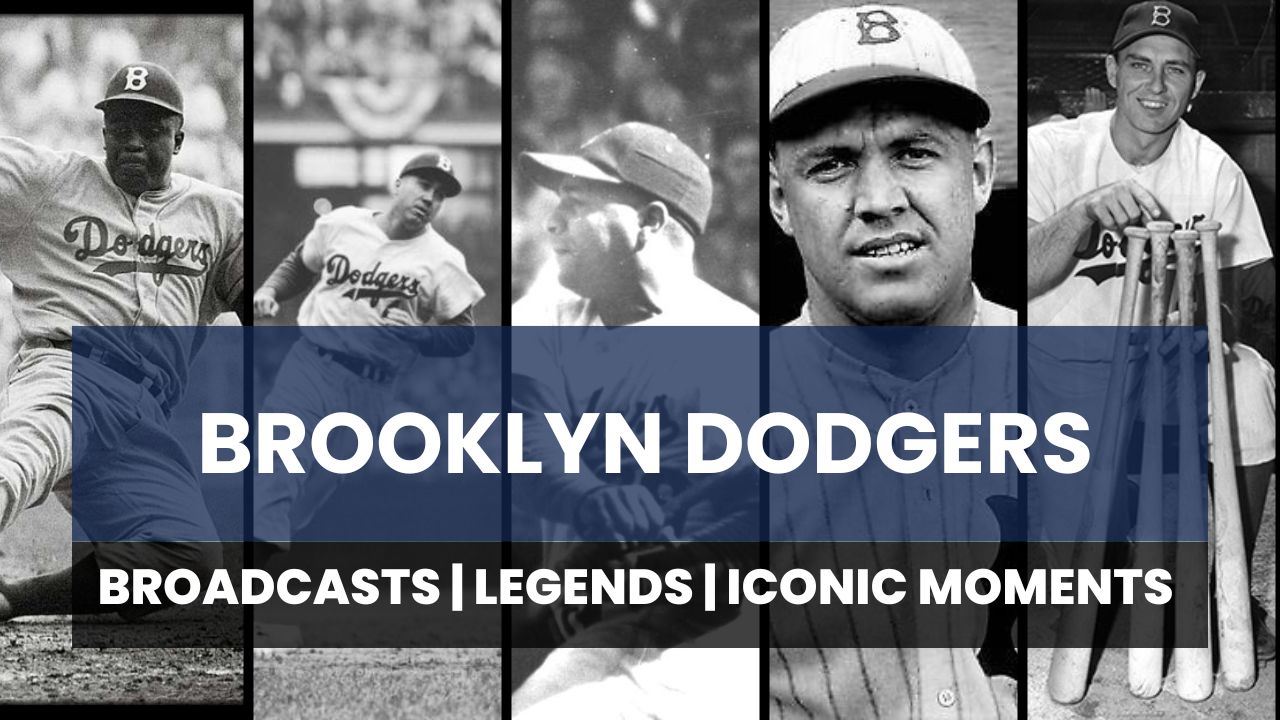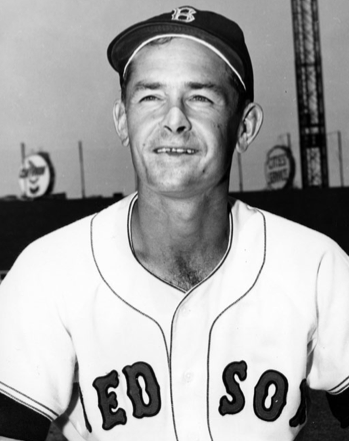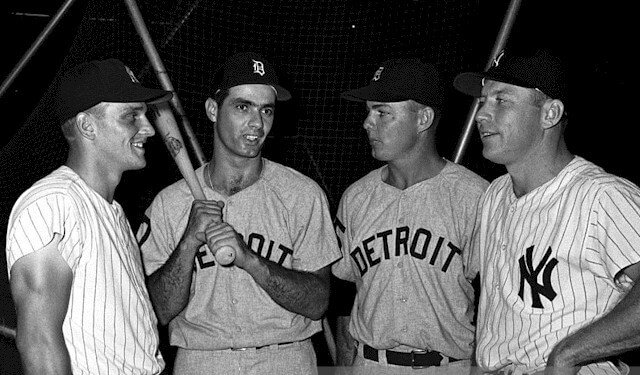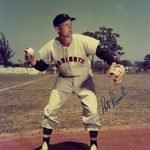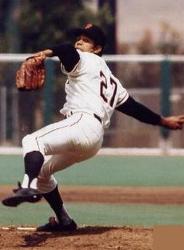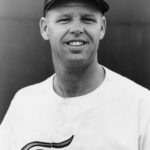Pete Runnels Stats & Facts
Pete Runnels
Positions: First Baseman, Second Baseman and Shortstop
Bats: Left • Throws: Right
6-0, 170lb (183cm, 77kg)
Born: Saturday, January 28, 1928 in Lufkin, TX USA
Died: May 20, 1991 in Pasadena, TX USA
Buried: Forest Park East Cemetery, Webster, TX
High School: Lufkin HS (Lufkin, TX)
School: Rice University (Houston, TX)
Debut: July 1, 1951 (8,401st in MLB history)
vs. PHA 4 AB, 1 H, 0 HR, 0 RBI, 0 SB
Last Game: May 14, 1964
vs. SFG 1 AB, 0 H, 0 HR, 0 RBI, 0 SB
Pete Runnels Baseball Reference Page
Full Name: James Edward Runnels
View Player Bio from the SABR BioProject
Nine Players Who Debuted in 1951
Willie Mays
Mickey Mantle
Roy McMillan
Pete Runnels
Frank Thomas
Johnny Logan
Bob Friend
Rocky Bridges
Gil McDougald
The Pete Runnels Teammate Team
C: Ed Fitz Gerald
1B: Mickey Vernon
2B: Nellie Fox
3B: Eddie Yost
SS: Don Buddin
LF: Ted Williams
CF: Jimmy Piersall
RF: Jackie Jensen
SP: Bob Porterfield
SP: Pedro Ramos
SP: Camilo Pascual
SP: Bill Monbouquette
SP: Ken Johnson
RP: Dick Radatz
M: Bucky Harris
Notable Events and Chronology for Pete Runnels Career
Growing up in Texas, Runnels was nicknamed “Little Pete” after his father and the moniker stuck. After graduating high school in 1945, Pete joined the U.S. Marine Corps, playing ball during his military stint. He was honorably discharged in 1948 and enrolled at Rice Institute (now Rice University) in Houston, but left after a semester to return to the diamond. He was invited to a St. Louis Cardinals tryout by Cards manager Eddie Dyer, who lived in Houston. Runnels reported to their 1949 spring training camp in St. Petersburg, Florida, but was assigned to the Cardinals’ Class C club in Winston-Salem, North Carolina without a contract offer. He instead left the team and returned west.
Runnels signed on that summer with Chickasha, Oklahoma, in the Class D Sooner League, where he hit .372 and met his future wife, Betty Ruth Hinton. In 1950, Runnels was promoted to the Class B Texarkana Bears of the Big State League, where he hit .330. His skilled bat caught the eye of the Washington Nationals, who purchased his contract. They assigned him to the Chattanooga Lookouts in Chattanooga, Tennessee, where he hit .356 during the first half of 1951, then called him up to the majors mid-season.
Pete was a versatile player and solid hitter with the Senators for seven years, batting .310 with a career-high 76 RBI in 1956. He hit a disappointing .230 in 1957, which led to his being traded to Boston that off-season. Runnels put together some great seasons with the Red Sox, which he credited to the sound advice he received from his new teammate Ted Williams. Pete had arrived in Boston with little plate patience and a tendency to try to pull every pitch. Under Williams’ guidance, Runnels began waiting for better pitches and started hitting to the opposite field.
In five years with the club, Runnels never hit below .314 and was a defensive standout as well. Originally a shortstop with Washington, Pete played a large number of games elsewhere in the infield with the Sox. Appearing in more than 143 games every season with Boston, he delivered 30-plus doubles three times and collected two batting titles, narrowly being edged out by Williams on the last day of the 1958 season for a third.
1958, Pete’s first year in Boston, produced 183 hits, a career-high he would tie again in 1962. By 1960, Runnels was well accustomed to the terrain of Fenway Park and it showed in his play in the field and at the plate. Despite suffering all season from stomach ulcers, he earned his first batting championship with a .320 average, while leading the league in fielding percentage at second base. With just a few games left in the season, Manager Mike Higgins offered to bench Runnels to rest his stomach and assure him a lock on the batting title. Pete refused and logged three hits in the next two games before finally agreeing to sit out the season finale.
Pete flashed the leather again in 1961, although at a different position. He moved over to the first base and led the league in fielding again with a .995 average.
1962 was Runnels’ final year with the Sox and he made it a good one. Picking up his second batting title in three years, Pete posted the best average of his career and was rewarded with his third All-Star selection as a Red Sox.
After going hitless in his first nine All-Star plate appearances, Pete made a splash in the ’62 Mid-Summer Classic. Pinch-hitting for AL starting pitcher Dave Stenhouse, Runnels led off the third inning by smashing a solo home run off the Phillies’ Art Mahaffey in the American League’s 9-4 triumph over the National League.
At the age of 35 after the ’62 campaign, Runnels was nearing the end of his playing days. He played in what was the equivalent of a full season in 1963 and 1964 with the Houston Colt .45’s and called it a career after that.
Pete did make it back to Boston as a coach in 1965 and 1966. He took over for the fired Billy Herman as interim manager near the end of the 1966 season, guiding the 64-82 Red Sox to an 8-8 record down the stretch. The Sox were out of the pennant race already, as they finished in 9th place, a distant 26 games behind Baltimore. Though he was encouraged by others to campaign for the team’s permanent managing position, Runnels wouldn’t do it. The job instead went to Dick Williams, who led the Sox in their Impossible Dream season in 1967.
Pete Runnels retired to his home state and ran a sporting goods store in Pasadena, Texas. He later founded the Highland Lakes Athletic Association and operated Camp Champions, a coed summer camp in Marble Falls, Texas. Runnels suffered a stroke while golfing in Pasadena on May 17, 1991. He died three days later at age 63 of a heart attack in Bayshore Hospital in Houston and was buried at Forest Park East Cemetery in Houston.
Accomplishments
* After play on September 26, 1958, Pete and Ted Williams were tied in the AL Batting race, with both men holding identical .32258 averages. The season ended two days later, as Runnels went hitless while Williams collected a home run and a double in four at-bats. Ted’s .328 beat out Pete’s .322, but Runnels said afterward that he enjoyed the 1958 batting race more than any other, including the two he would later win.
* Won batting titles in 1960 (.320) and 1962 (.326)
* Named an American League All-Star in 1959, 1960 and 1962. He started the second game at first base in 1959, and started both games in 1960 at second base.
* On August 30, 1960 at Fenway Park, Runnels goes 6-for-7 in the first game of a doubleheader, including a 15th-inning double to deep center field over the head of Al Kaline. That scores Frank Malzone with the winning run as the Red Sox beat the Tigers 5-4. In the nightcap, won by Boston in 10 innings, he logs three more hits. By going 9-for-11 on the day, he ties the major league record for most hits in a twin bill. He also raises his batting average from .311 to .324, tying him for the AL lead with the White Sox’ Al Smith.
* Inducted into the Texas Sports Hall of Fame in 1982.
* Inducted posthumously into the Red Sox Hall of Fame in November 2004.
* His alma mater, Lufkin High School, hosts an annual baseball tournament in his memory — the Pete Runnels Texas Shoot-Out.
Quotes
“I was thinking in my heart, I hope he wins it. I’m not going to give it to him, but I hope he wins it. Runnels had never won a batting championship, and I had won five. We weren’t in the pennant race. It certainly wouldn’t make much difference to me at that point. I wasn’t getting the kick out of it I had the year before.” — Ted Williams, on the 1958 batting race with his teammate.
“I want to win this thing the right way.” — Pete Runnels, refusing an offer by manager Mike Higgins to sit out the remainder of the 1960 season and secure the AL batting crown.
“A guy like me doesn’t win a batting title with his muscles. He does it with his head. Recent champions like Williams, Mickey Mantle, Stan Musial, Harvey Kuenn and Hank Aaron can scare opposing pitchers. I don’t scare anybody. I have to out-think and outguess the fellow on the pitching mound.
“Like other experienced ballplayers, I have a “book” on the league’s pitchers. In other words, I know what each is most likely to throw me in given circumstances. The book doesn’t always help. When I’m in a slump, my bat won’t do what my mind tells it to. And when a top-notch pitcher has all his stuff, I need more than brains to hit him safely. But there are tricks to the trade of hitting, and I’ve learned a few of them in my ten years in the American League.” — Pete Runnels, discussing his 1960 batting title.
@ET-DC@eyJkeW5hbWljIjp0cnVlLCJjb250ZW50IjoicG9zdF90YWdzIiwic2V0dGluZ3MiOnsiYmVmb3JlIjoiTGVhcm4gTW9yZSBhYm91dCB0aGUgdGVhbXMsIHBsYXllcnMsIGJhbGwgcGFya3MgYW5kIGV2ZW50cyB0aGF0IGhhcHBlbmVkIG9uIHRoaXMgZGF0ZSBpbiBoaXN0b3J5IC0gLSAtIC0gLSAtIC0gIiwiYWZ0ZXIiOiIiLCJsaW5rX3RvX3Rlcm1fcGFnZSI6Im9uIiwic2VwYXJhdG9yIjoiIHwgIiwiY2F0ZWdvcnlfdHlwZSI6InBvc3RfdGFnIn19@
Factoids, Quotes, Milestones and Odd Facts
Played For
Washington Senators (1951-1957)
Boston Red Sox (1958-1962)
Houston Astros (1963-1964)
Managed
Boston Red Sox (1966)
Similar: Heinie Groh, Milt Stock and Ossie Bluege. Billy Goodman is a very good comp in many ways: he won a batting title, he didn’t play one position for that long, and he played for the Red Sox. But Runnels was a far better defensive player than Goodman ever was. Also, Greg Jefferies was eerily similar.
Linked: Ted Williams hit .403 over his last 55 games of the 1958 season to edge Runnels for the batting title… Albie Pearson was part of the trade that sent Runnels from the Senators to the Red Sox, on January 23, 1958. Pearson and Norm Zauchin, who also went to Washington for Runnels, never panned out in the Capitol. The two played a combined 286 games for the Senators before moving on.
Best Season, 1962
Not a lot better than his 1958 or 1960 seasons, but better. He hit .326 with a career-best .456 slugging percentage and 10 homers. His 48 extra-base hits were the best of his career. Essentially, Runnels was a singles hitter.
All-Star Selections
Where He Played: All over the place: first base (644), second base (642), shortstop (463), third base (49). Like Greg Jefferies, Runnels was a great bat who couldn’t find a spot to play defensively. His teams tried to hide him here and there, anything to get his stick in the lineup.
Feats: On August 30, 1960, Runnels collected six hits in the first game of a doubleheader against the Tigers, including the game-winning double in the 15th inning. In the second game of the twinbill, Runnels banged out three more hits, tying a ML record for hits (nine) in a doubleheader.
Transactions
Runnels was a fine hitter his whole career, but his seven seasons in Washington’s spacious Griffith Stadium masked the fact. When he got to the Red Sox in 1958, he was helped by advice from Ted Williams and others, who told him to just slap the ball into the holes… On November 25, 1962, the Red Sox traded Runnels, the defending AL batting champion, to the Houston Colt .45s for outfielder Roman Mejias. The move was a good one for Houston, as Runnels gave them a year of solid play, while Mejias failed to stick in Boston after one year of .227 hitting.
All-Star Selections
1959 AL
1960 AL
1962 AL
Replaced
Sam “Blackie” Dente as shortstop for the Nationals in 1951. Dente was a journeyman infielder, who played for five of the eight Al teams in his day. He had no power, no speed and rarely drew a walk. In the field, Dente committed 67 errors for Washington at shortstop in 1949-1950. After leaving the Senators, Dente was never a starter again.
Replaced By
In his last season as a semi-regular, Runnels played 70 games at first, 36 games at second base and three at third for the Astros in 1963. The next season he was essentially replaced by a group of young players.
Best Strength as a Player
Hitting for average, and versatility.
Largest Weakness as a Player
Hitting for power.
Other Resources & Links


